Weight unusual for age: is it correct?
Input the child's age and weight (if known) above
| Equipment | |
|---|---|
| Airway | Size / Depth |
| laryngoscope blade | 0-1 straight 1 straight 2 curved or straight 2-3 curved 3 curved … |
| bougie / stylet | 6 Fr stylet 10 Fr stylet or bougie 14 Fr bougie … |
|
ETT (endotracheal tube) diameter |
3.0 mm cuffed 3.5 mm uncuffed 3.5 mm cuffed 4.0 mm uncuffed 4.0 mm cuffed 4.5 mm uncuffed 4.5 mm cuffed 5.0 mm cuffed 5.5 mm cuffed 6.0 mm cuffed 6.5 mm cuffed 7.0 mm cuffed … |
| ETT oral depth | 10 10.5 11 11.5 12 12.5 13 13.5 14 14.5 15 15.5 16 16.5 17 17.5 18 18.5 19 19.5 20 20.5 … |
| ETT nasal depth | 11 11.5 12 12.5 13 13.5 14 15.5 16 16.5 17 17.5 18 18.5 19 19.5 20 20.5 21 21.5 22 22.5 … |
| suction catheter |
8 Fr
8 Fr (cuffed ETT) 10 Fr (uncuffed ETT) 10 Fr 12 Fr … |
| supraglottic airway | 1 1.5 2 2.5 3 4 5 … |
| oropharyngeal airway | 3 4 5 6 7 8-9 … |
| nasopharyngeal airway | 3.0 4.0 5.0 6.0-8.0 … |
| Other Equipment | Size |
| naso/orogastric tube | 6 8 10 12 … |
| chest drain (air / effusion) | 8 12 … |
| chest drain (trauma / blood) | 12 18 20-24 24-28 … |
| indwelling urinary catheter | 6 8 10 12 14 … |
| femoral central venous line | 4 4-5 5 7 … |
|
Ventilation |
|
|---|---|
| Standard Strategy | Size / Initial Setting |
| Hamilton circuit |
paediatric, dual limb
adult, coaxial
…
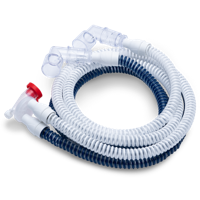
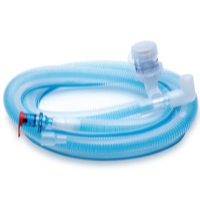
|
| HME filter |
neonatal, green (Vt 30-100mL) paediatric, white (Vt 50-250 mL) adult, blue … 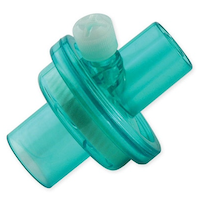
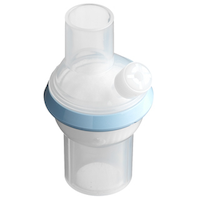
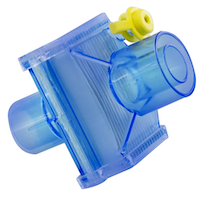
|
| mode | volume controlled, SIMV+ volume controlled, SIMV+ … |
| respiratory rate | 40 35 30 25 20 18 16 … |
| Vt (tidal volume) | … … … … |
|
TI (inspiratory time) |
0.5 0.6 0.7 0.8 1.0 … |
| oxygen — PEEP |
<40% — 5 cmH2O ≥40% — 8 cmH2O <40% — 5 cmH2O 40-60% — 8 cmH2O >60% — 10 cmH2O … |
|
Asthma Strategy ≥2 years old |
Size / Initial Setting |
| Hamilton circuit |
paediatric, dual limb
adult, coaxial
…


|
| HME filter |
neonatal, green (Vt 30-100mL) paediatric, white (Vt 50-250 mL) adult, blue … 


|
| mode | volume controlled, SIMV+ … |
| respiratory rate | 16 14 12 10 … |
| Vt (tidal volume) | … … |
|
TI (inspiratory time) |
0.6 0.7 0.8 0.9 … |
| PEEP | 5 0 … |
| alarm limit adjustments |
Pressure upper limit → max, ExpMinVol lower limit → min, Vt lower limit → min … |
| Observations | Normal Range |
|---|---|
| respiratory rate | 30-55 20-45 15-35 15-30 15-25 … |
| heart rate | 100-160 100-150 90-130 80-120 60-110 … |
| systolic blood pressure | 65-110 75-120 80-125 85-130 90-150 … |
| Administration Route Colours |
|---|
| IV/IO stat or load |
IV/IO infusion |
| other (ETT, intramuscular, intraNASAL, nebulised, oral) |
| Abbreviations |
|---|
| bpm beats or breaths per minute cm centimetres cmH2O centimetres of water CO2 carbon dioxide ECG electrocardiogram ED Emergency Department ETT endotracheal tube Fr French g grams h hours HME heat & moisture exchanger IO intraosseous IV intravenous J joules kg kilograms L litres max maximum mg milligrams microg micrograms min minutes mL millilitres mm millimetres mmHg millimetres of mercury mmol millimoles PEEP positive end‐expiratory pressure RHH Royal Hobart Hospital s seconds SIMV synchronized intermittent mandatory ventilation VBG venous blood gas |
| Disclaimer |
|---|
| This calculator has been designed to assist clinicians with weight based calculations in children. The calculator does not replace a medication prescription or clinical judgement. All drug calculations are based on established paediatric resuscitation resources (ARC & APLS) and protocols at the RHH ED. Please review your local protocols before prescribing these drugs. Please check all prescriptions and medications carefully as the author takes no responsibility for the accuracy of doses or calculations. The calculator is designed to be used in conjunction with an appropriate formulary which contains information on drug interactions, compatibilities, precautions, side effects, rates of delivery, maximum/minimum doses and drug monitoring. |

 Paediatric Calculator
Paediatric Calculator